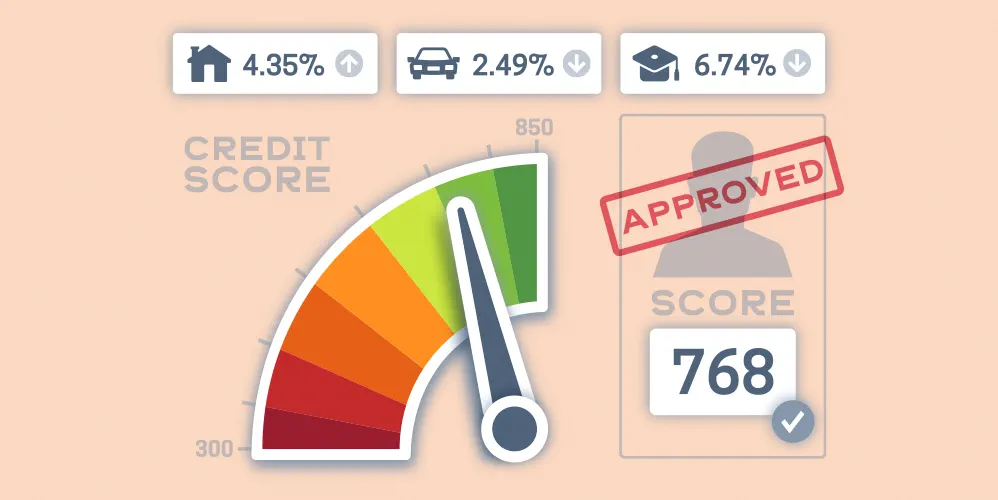
What is a Working Capital Loan and How Can It Benefit Your Business?
23 Oct 2024

Table of Content
Introduction
In the fast-paced world of business, maintaining a steady flow of working capital is essential for smooth operations. A working capital loan is designed to help businesses manage their short-term financial needs, ensuring they have sufficient funds to cover daily expenses and operational costs. This comprehensive guide will explore what working capital loans are, their features, types, pros and cons, and how they can be used effectively in business.
What is a Working Capital Loan?
A working capital loan is a type of short-term financing that businesses use to cover their everyday operational expenses. These loans are not typically used to purchase long-term assets or investments but are meant to provide the necessary liquidity to meet immediate financial obligations. The main purpose of a working capital loan is to bridge the gap between the timing of revenue inflows and the outflows required to cover operational expenses.
For instance, a business might use a working capital loan to pay for inventory, payroll, rent, and other day-to-day expenses. These loans are crucial for businesses that experience seasonal fluctuations in revenue or have irregular cash flow patterns.
Features of Working Capital Loans
Working capital loans come with specific features that make them suitable for addressing short-term financial needs. Some of the key features include:
- Short-term Duration: These loans typically have a shorter repayment period, ranging from a few months to a year.
- Flexible Use: Funds from a working capital loan can be used for various operational expenses, such as purchasing inventory, paying bills, or covering payroll.
- Quick Approval and Disbursement: Lenders often process and disburse working capital loans faster than long-term loans, providing businesses with quick access to funds.
- Collateral Requirement: Depending on the lender and the loan amount, working capital loans may or may not require collateral. Unsecured loans are available but usually come with higher interest rates.
Types of Working Capital Loans
There are several types of funds based and non-fund based working capital loans available to businesses, each designed to meet specific financial needs. Some common types include:
a) Overdraft Facility - An Overdraft is a financial tool that allows individuals or businesses to withdraw money from their bank account on credit, even if the account balance is zero.
b) Cash Credit Facility - Cash credit is a type of working capital loan in which money can be withdrawn against the hypothecation of stocks and receivables.
c) Term Loan - These are standard loans with a fixed repayment schedule and interest rate. Businesses receive a lump sum amount that they repay over a set period.
d) Bank Guarantee - A bank guarantee is when a bank offers surety and guarantees for different business obligation on behalf of their customers within certain regulations.
e) Packing Credit - Pre-shipment / Packing Credit means any loan or advance granted or any other credit provided by a bank to an exporter for financing the purchase, processing, manufacturing or packing of goods prior to shipment / working capital expenses towards rendering of services.Also Read: The Different Types of Loans Available in India
f) Letter of Credit – Through Letter of Credit Banks offer monetary guarantee to entities that are engaged in the import and export businesses.
g) Invoice Financing: Businesses can use their outstanding invoices as security to obtain a loan. The lender advances a percentage of the invoice value, providing immediate cash flow.
h) Post Shipment Finance – Post shipment finance refers to the credit or financial assistance provided to exporters after shipment of goods and until the receipt of payment from the importer. It addresses working capital needs of exporters during the period when goods are in transit and awaiting payment
i) Bill Discounting - Bill discounting allows businesses to sell their unpaid invoice to a financier at a discount. The customers are not notified that their invoices have been sold and businesses retain the control of collecting the bill amount from their customers. When the customer pays back their debt, the company pays back the lender.
j) Bill purchase – Bills purchasing is similar to bill discounting with the difference being that the financial institution retains the right to recoup the receivables from the businesses customers. Essentially the difference lies in the collection mechanism.
Pros and Cons of Working Capital Loans
Like any financial product, working capital loans have their advantages and disadvantages.
Pros :
- Quick Access to Funds: Businesses can obtain funds quickly, helping them manage urgent financial needs.
- Flexibility: Funds can be used for various operational expenses, providing businesses with flexibility in managing their cash flow.
- No Equity Dilution: Unlike equity financing, working capital loans do not require businesses to give up ownership stakes.
Cons
- Higher Interest Rates: Working capital loans often come with higher interest rates compared to long-term loans.
- Short Repayment Period: The short repayment period can strain the business’s cash flow if not managed properly.
- Collateral Requirement: Some loans may require collateral, putting business assets at risk in case of default.
Uses of Working Capital Loans in Business
Working capital loans can be used in various ways to support business operations. Some common uses include:
Purchasing Inventory: Businesses can use the loan to buy inventory, especially during peak seasons, to meet customer demand without straining their cash reserves.
Covering Payroll: Ensuring employees are paid on time is crucial for maintaining morale and productivity. A working capital loan can help cover payroll during periods of low cash flow.
Also Read: A Complete Guide to Get a Loan Against an FD
Paying Bills: Regular operational expenses such as rent, utilities, and supplier payments can be managed using a working capital loan.
Managing Seasonal Fluctuations: Businesses with seasonal sales cycles can use these loans to manage cash flow during off-peak periods.
Funding Marketing Campaigns: Investing in marketing and promotional activities can drive sales. A working capital loan provides the necessary funds for such initiatives without disrupting cash flow.
Conclusion
A working capital loan is an essential financial tool for businesses needing to manage short-term expenses and maintain operational efficiency. By understanding the various types of working capital loans, their features, and how they can be used, businesses can make informed decisions that support their financial stability and growth. While working capital loans offer quick and flexible funding, it’s important to consider the associated costs and repayment terms to ensure they align with the business’s financial strategy.
Popular Articles
Tag Clouds
Related Articles









Guide to Getting Agriculture Loan: Application, Eligibility & Required Documents

-
Disclaimer
The contents of this article/infographic/picture/video are meant solely for information purposes and do not necessarily reflect the views of Bank of Baroda. The contents are generic in nature and for informational purposes only. It is not a substitute for specific advice in your own circumstances. Bank of Baroda and/ or its Affiliates and its subsidiaries make no representation as to the accuracy; completeness or reliability of any information contained herein or otherwise provided and hereby disclaim any liability with regard to the same. The information is subject to updation, completion, revision, verification and amendment and the same may change materially. The information is not intended for distribution or use by any person in any jurisdiction where such distribution or use would be contrary to law or regulation or would subject Bank of Baroda or its affiliates to any licensing or registration requirements. Bank of Baroda shall not be responsible for any direct/indirect loss or liability incurred by the reader for taking any financial decisions based on the contents and information mentioned. Please consult your financial advisor before making any financial decision.
What is an MSME Loan & how does it work?
MSME loans, or Micro, Small, and Medium Enterprises loans, are designed to support the growth and development of small businesses. These loans provide the necessary funds for business expansion, operational expenses, and other financial needs. The MSME stands for Micro, Small, and Medium Enterprises.
Understanding the Differences Between Home Loans and Mortgage Loans
In the world of finance, loans are as diverse as the people who avail them. But there's one common misunderstanding that we'd like to address: the difference between home loans and mortgage loans. Many people believe these terms are interchangeable, but they are actually two distinct financial products with different purposes, features, and implications. To ensure you make informed decisions when it comes to your homeownership or financial goals, let's break down the key differences between mortgage loans vs home loans.

